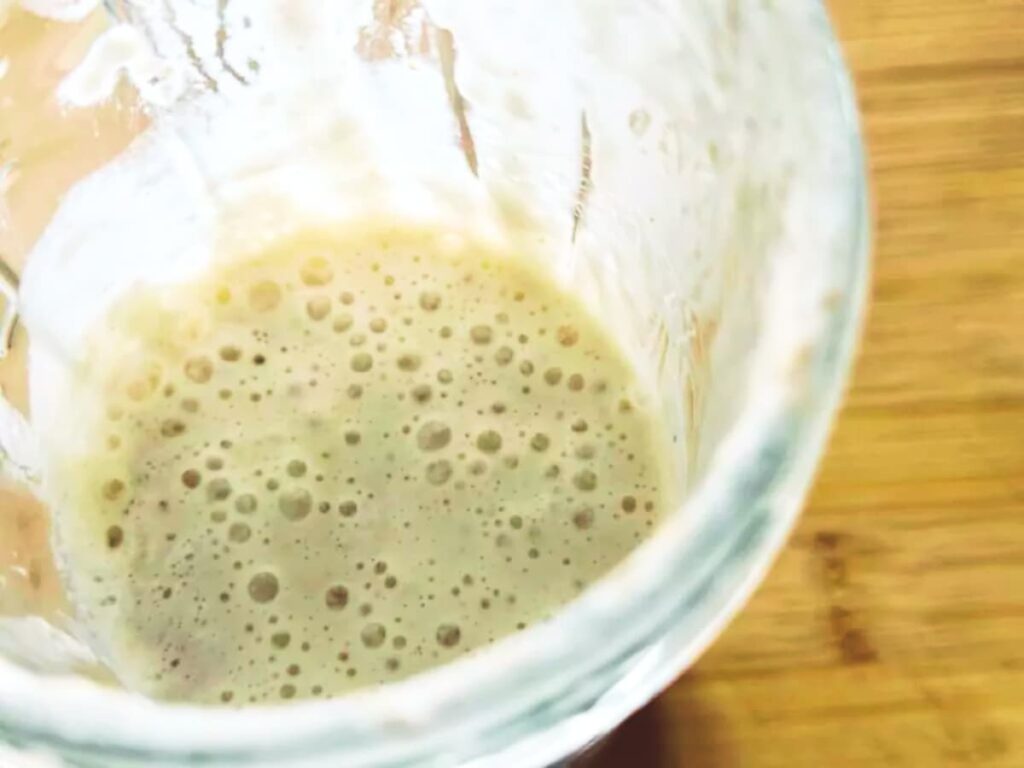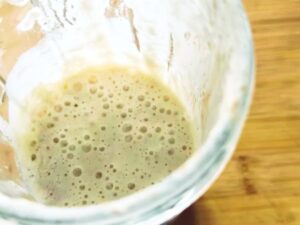One of the biggest questions about baking with sourdough is usually, how do I feed a sourdough starter? It can seem quite daunting to try and keep this jar of flour and water alive but it’s easier than you think. Lets take a look at the key elements of feeding and maintaining a sourdough starter.

So you’ve seen everyone jump on the sourdough train since Lockdown, and you’ve read all the benefits of eating sourdough but you have no idea how to start one, or how to keep it alive!
It can be pretty daunting when you first peep into this world, but it’s not as bad as you may think.
Sourdough can fit easily into your daily life, a few minutes here, a few minutes there, but mainly it’s about planning. This is the first big hurdle. Sourdough takes planning.
Sourdough differences
So I would say the first main difference is the time it takes.
In our fast moving society, we want everything done now, or even yesterday. Bread takes time. Sourdough bread takes even longer. But it is so worth it.
Regular baker’s yeast that you would buy from the grocery store is a species called Saccharomyces cerevisiae. (1)
It is usually dried and when rehydrated, quickly rises the dough to bake in a relatively short time. Two rises will take somewhere in the region of 1 1/2 hrs-2 hrs before it’s ready to put in the oven.
Contrast that with Sourdough. Sourdough most commonly contains Kazachstania exigua (Saccharomyces exiguous), Saccharomyces cerevisiae, K. exiguus and K. humilis (previously Candida milleri or Candida humilis) (2). It’s not just one strain, it’s many, working together.
They also take their sweet little time to provide those health benefits we all know and love, and long fermented sourdough, as the name suggests, takes much longer to rise.
Not all Sourdough is created equal..
On that note, it’s important to realise that a lot of sourdough that is commercially produced is not technically long fermented, unless it states that. It has just had some starter added to it, similar to sourdough discard recipes, to give the taste of the sourdough. These products don’t have the same health benefits as the long fermented varieties.
This is not an issue in and of itself, as long as you know this. My problem with this is only that people may not know and think they are buying one thing, when in actual fact it doesn’t have the benefits they were looking for. (3)
“It boils down to this if it’s wrapped in plastic and it contains an additive that you don’t find in a typical domestic kitchen, then it is ultra-processed food.”
Dr. Chris van Tulleken (4)
The Why
So in a nutshell, our little yeasty friends are there to partially pre digest the carbohydrates in the flour, and turn them into gas. The gas gives us lift in the dough and makes a yummy fluffy bread product. To do this, the bacteria need a few things; food (flour) water, and air.
Flour
The type of flour we use is important, because all flour carries these microscopic bacteria, but just as for humans, some flours are better for them than others.
- Rye flour is the steroid shot for sourdough starters. If eve your need to strengthen your starter, give it feeding using Rye flour and it will perk it right up.
- Einkorn, Spelt and Wholemeal flours would be the next best flours to use, though they all have a much higher uptake of water than white flour, so some recipes mix some of these flours in, rather than use as the main flour, especially for beginners.
- Organic unbleached strong white bread flour is probably the most commercially available flour, and anyone can use it, in a variety of recipes.
I would always recommend using bread flour for sourdough, just because it has a much higher protein percentage. This makes for a nicer finished bread product.
But other than that, use whatever bread you feel comfortable with, and what you have easy access to. I’m all about making things as easy as possible, that way I get the job done.
Water
Plenty of people have used tap water for their sourdough starter and been fine. Let me just start with that.
However..
Filtering your city tap water will give the bacteria that we are trying to cultivate the absolute best chance of thriving. This is because most city tap water contains fluoride and chlorine, both of which CAN harm our little buddies.
But then, I would recommend a water filter anyway, for drinking and cooking as a permeant switch in your household. (5)
To metal or not to Metal?
You may have seen this from all corners of the T’interweb, that you should NEVER use metal utensils for your sourdough or starter as it kills of the bacteria that we are trying to cultivate.
For long term storage I would definitely say no, don’t do that, but as for utensils… meh..
Stirring with a metal spoon is not going to cause major damage in the few seconds that it is in the jar. Another barrier to getting it done can be lifted.
Now, I do use wooden stirrers, but I use those anyway for baking. It’s not something I have bought especially for this.
I don’t stick to all the rules.
I don’t weigh my ingredients, I use a measuring cup. I eyeball the right amount to get the texture of thick pancake batter. If it doesn’t seem to be rising, I feed it again and put it somewhere warm. It seems to work.
If you can make the daily care of your starter easier on yourself, then do!
So How do I Feed a Sourdough Starter?
Ok, now we know what we’re dealing with, lets actually look at what we need to do.
We know the point is to feed the friendly yeast and bacteria to create rise. But if we just kept adding food (flour) and water to the jar at double the rate, we’d soon be overrun with starter.
So I discard some into a jar, leaving enough left at the bottom to feed. In the video, you’ll see I used the absolute last bit of my starter. But I had some discard in the fridge so I was able to revitalise that and use it. Another benefit, and a bit of an insurance policy!
I also love to use the discard to make other yummy recipes, like these Sourdough Discard Brownies, or these quick discard waffles.
How much do I Feed it?
The general consensus is that you should feed 1/1/1 so equal amounts of starter, flour, and water. However, I find that too runny most of the time. I also don’t always know exactly how much starter I have left since I tip straight out of the jar and don’t weigh it.
I do, however have a band around my jar so I can see how far it rises. I use that as a guide. (ALL about making it simple enough to do every day.)
I try and make sure I have about half of the amount left, then I put a cup of flour and just under a cup of filtered water into the jar with the starter. I give it all a good mix and set it aside to rise, adjusting the band around the jar if it is at a different level.

It usually takes about 3-4 hrs in my kitchen to rise to at least double the level, which is when it’s ready to bake with. So I tend to plan backwards.
Planning
So a sample timeline would be as follows:
I need bread for tomorrow lunch. So I need to bake in the morning. I need to my sandwhich bread recipe to ferment on the counter overnight, so I need to get it ready before bed. Than means I feed Gerald while I’m prepping tea for the evening.
- 4pm: Feed Gerald, my starter
- 9.30pm: Mix and knead dough in the mixer.
- 9.40pm: Cover dough and leave to ferment overnight.
- 7am: Shape dough into two loaf pans, cover and rise further
- 11am: Bake the loaves and cool ready for lunch
It’s definitely something that you get into the habit of, and the more you do it, the less daunting it becomes.
I’m all about making sourdough easier to work with. I hope this has helped. Let me know your questions in the comments. Thanks friends x

